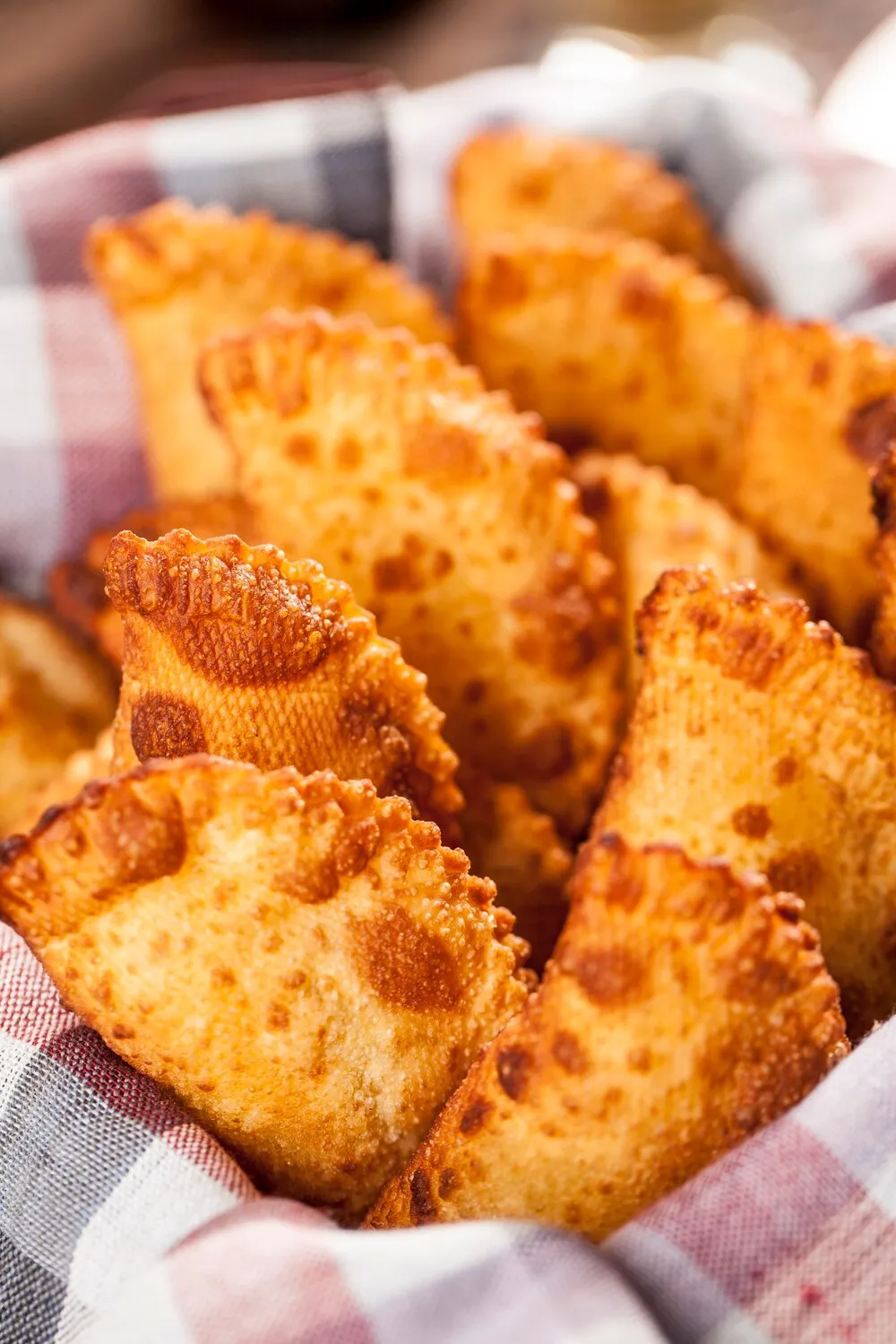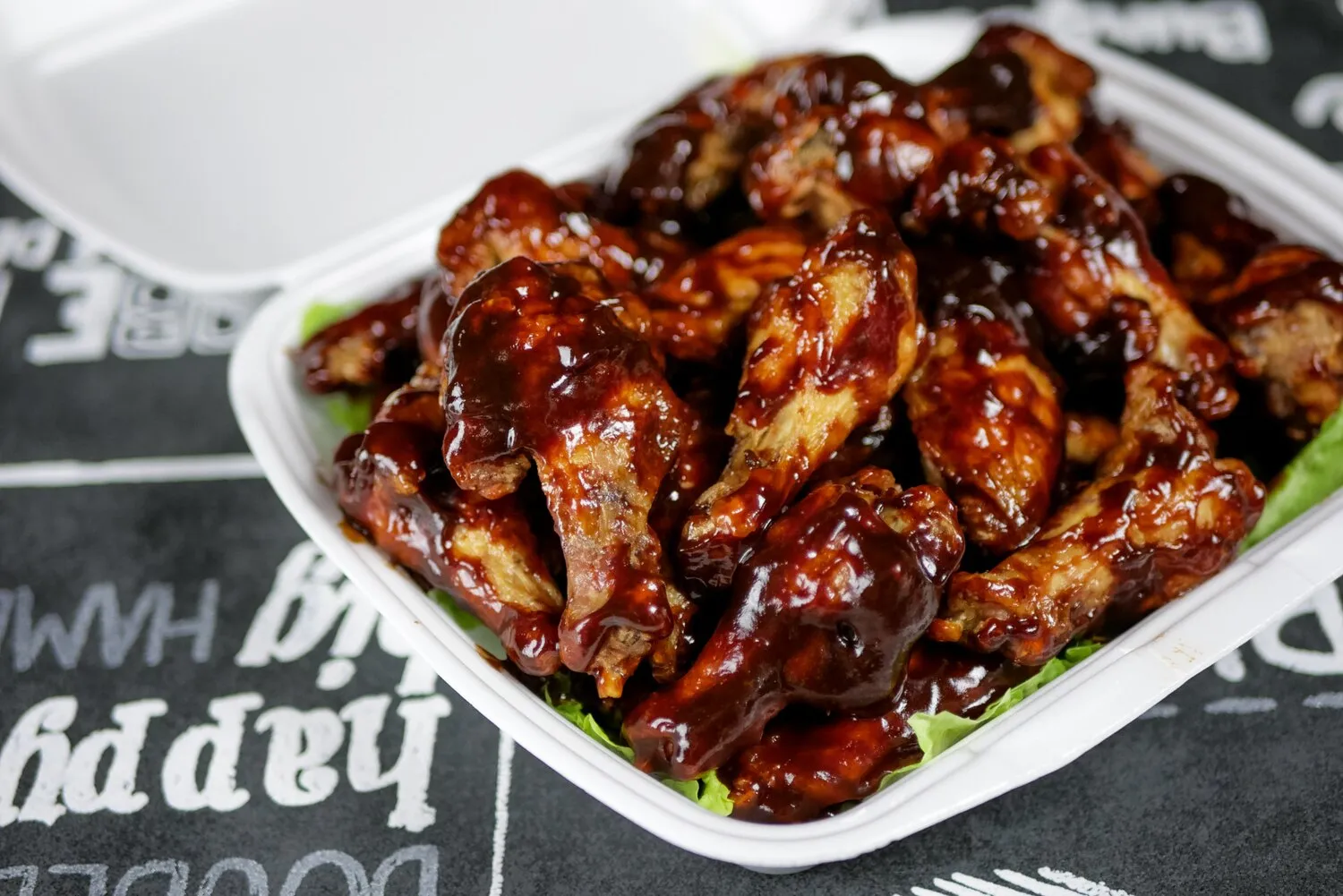
Pastel de Camarão
Shrimp pastry, a type of fried turnover filled with shrimp. A popular appetizer or snack.
Nutrition Facts
* The % Daily Value (DV) tells you how much a nutrient in a serving of food contributes to a daily diet. 2,000 calories a day is used for general nutrition advice.
Antonio's Restaurante
Pastéis (plural of Pastel) are believed to have been introduced to Brazil by Japanese immigrants, who adapted Chinese spring rolls and other fried dough dishes to local ingredients and tastes. The incorporation of shrimp (camarão) as a filling reflects Brazil's extensive coastline and abundant seafood.
Pastel de Camarão is a popular and accessible street food and snack, deeply embedded in Brazilian culinary culture. It's commonly enjoyed as a quick bite at fairs, markets, beaches, and 'pastelarias' (specialized pastel shops).
Street Food Staple
Pastel de Camarão is ubiquitous at Brazilian street fairs and markets, often paired with caldo de cana (sugarcane juice).
Pastelarias
Specialized shops dedicated to pastéis, offering a wide variety of fillings, are common in Brazil, making Pastel de Camarão readily available.
Social Gathering Food
Pastel de Camarão is often enjoyed during casual gatherings and celebrations, reflecting its accessibility and broad appeal.
The Pastel de Camarão offers a delightful combination of savory, slightly sweet, and umami flavors, with a crispy exterior and a tender, flavorful filling.
The dominant flavor is that of shrimp, often cooked with onions, garlic, tomatoes, and occasionally bell peppers. These ingredients create a rich and savory base. The seasoning typically includes salt, pepper, and sometimes a touch of paprika or other Brazilian spices. The deep-frying process adds a layer of richness and a satisfying crunch. Some variations may include cheese (usually requeijão or catupiry) for a creamier texture and richer flavor.
Dough Consistency
The dough should be thin and elastic, allowing for a crispy and light texture when fried. Overworking the dough can result in a tough pastry. Some people use pinga (cachaça) in the dough to make it extra crispy.
Filling Preparation
Ensure the shrimp filling is not too watery to prevent the pastry from becoming soggy. Pre-cook the shrimp and drain any excess liquid. Binding agents like breadcrumbs can also help absorb moisture.
Frying Temperature
Maintain a consistent oil temperature (around 350-375°F or 175-190°C) for optimal frying. Too low a temperature will result in a greasy pastel, while too high can burn the exterior before the filling is heated through.
Sealing the Edges
Properly seal the edges of the pastel to prevent the filling from leaking during frying. Use a fork to crimp the edges tightly.
Explore additional Appetizers dishes and restaurants
Explore AppetizersDiscover top dining spots and culinary experiences in Florianopolis.
Explore FlorianopolisLearn more about the food culture, restaurant scene, and culinary heritage of Brazil.
Explore Brazil
